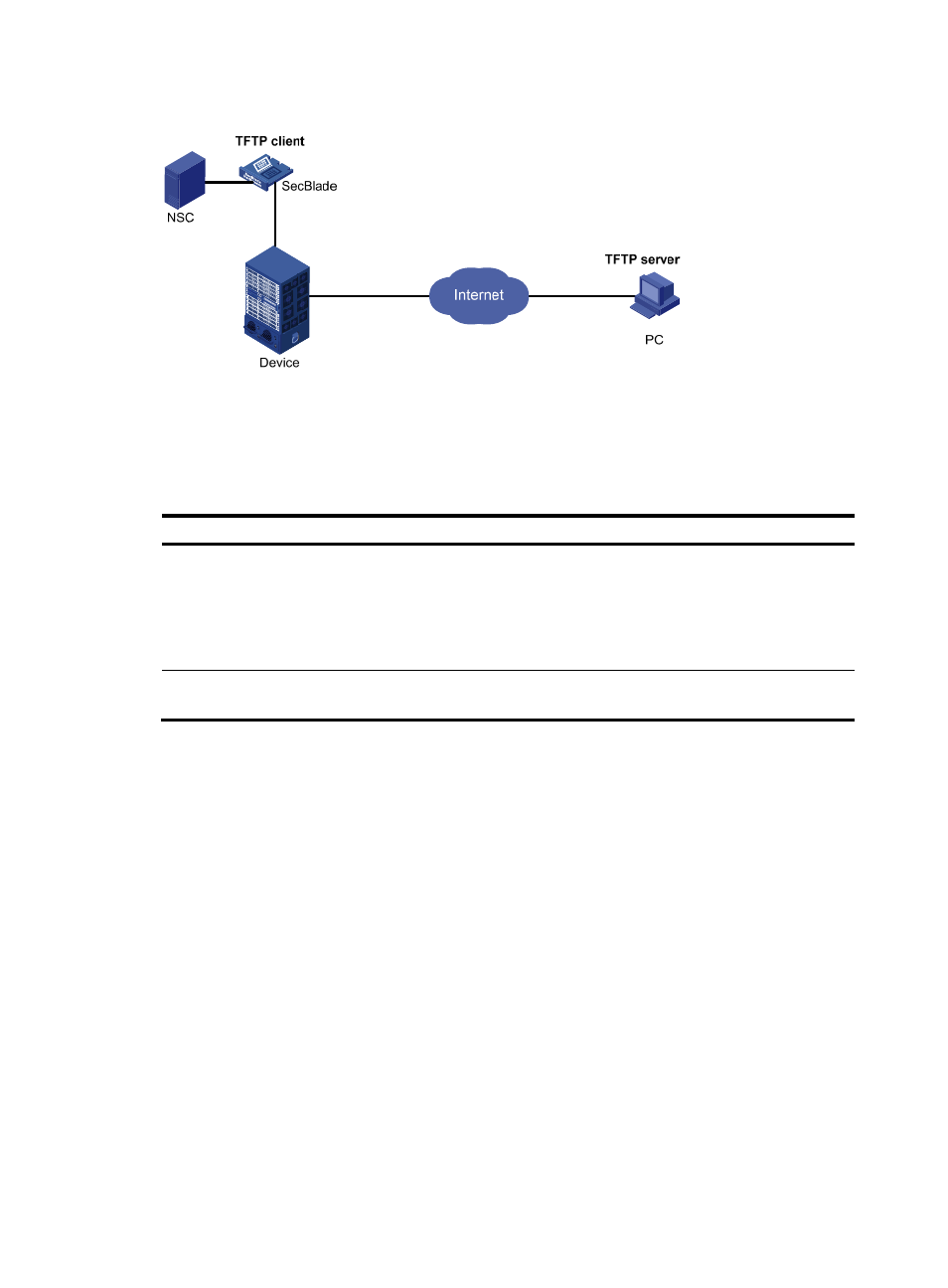Configuring the tftp client – H3C Technologies H3C SecBlade NetStream Cards User Manual
Page 236

221
Figure 69 TFTP configuration diagram
Before using TFTP, the administrator needs to configure IP addresses for the TFTP client and server, and
make sure that there is a reachable route between the TFTP client and server.
When the device serves as the TFTP client, you need to perform the following configuration:
Table 17 Configuration when the device serves as the TFTP client
Device Configuration
Remarks
SecBlade (TFTP client)
•
Configure the IP address and routing function, and
ensure that the route between the device and the TFTP
server is available.
•
Use the tftp command to establish a connection to the
remote TFTP server to upload/download files to/from
the TFTP server
—
PC (TFTP server)
Enable TFTP server on the PC, and configure the TFTP
working directory.
—
Configuring the TFTP client
When a device acts as a TFTP client, you can upload a file on the device to a TFTP server and download
a file from the TFTP server to the local device. You can use either of the following methods to download
a file:
•
Normal download: The device writes the obtained file to the storage medium directly. If you
download a remote file using a filename destination-filename that exists in the target directory, the
device deletes the original file and saves the new one. If file download fails due to network
disconnection or other reasons, the original file will never recover because it has been deleted.
•
Secure download: The device saves the obtained file to its memory and does not write it to the
storage medium until the whole file is obtained. If you download a remote file using a filename
destination-filename that exists in the target directory, the original file is not overwritten. If file
download fails due to network disconnection or other reasons, the original file still exists. This mode
is more secure but consumes more memory.
H3C recommends you use the secure mode or, if you use the normal mode, specify a filename that does
not exist in the target directory.
